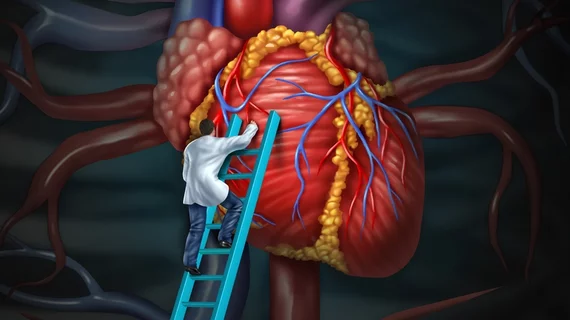Sapien 3 TAVR outcomes comparable to surgery after 5 years
Transcatheter aortic valve replacement (TAVR) with the Sapien 3 prosthesis achieved five-year clinical outcomes similar to surgical aortic valve replacement (SAVR), according to a late-breaking clinical science presentation at the TVT Connect 2020 virtual meeting.
Susheel K. Kodali, MD, of NewYork-Presbyterian/Columbia University Irving Medical Center in New York City, shared the results Sunday, June 21. Stephan Windecker, MD, of Bern University Hospital in Switzerland, chaired the session.
The researchers performed a propensity-matched analysis of more than 1,500 intermediate-risk patients, comparing the outcomes of patients who received the Sapien 3 device with those who had surgery. Patients were excluded from the analysis for a bicuspid aortic valve, severe LV dysfunction, untreated severe coronary artery disease and severe renal insufficiency.
Overall, at five years, 353 TAVR patients and 383 SAVR patients were alive. All-cause morality rates were 39.1% for TAVR patients and 41.3% for SAVR patients, and no significant difference was observed when it came to all stroke rates or the combined endpoint of death or disabling stroke.
Also, while 16.2% of TAVR patients needed a new permanent pacemaker, that number for SAVR patients was 11.7%. Rates of moderate-to-severe paravalvular regurgitation (PVR) were higher for TAVR patients after 30 days and one year—but the rates evened out after five years. Low rates of structural valve deterioration at five years were seen in both TAVR and SAVR patients.
“These results with Sapien 3 TAVR demonstrating clinical outcomes and valve durability comparable to surgery at five years, associated with low PVR, are encouraging and continue to support TAVR as an alternative to surgery,” Kodali concluded.
Individuals who have signed up for TVT Connect 2020 can watch Kodali, Windecker and others discuss these findings here.

